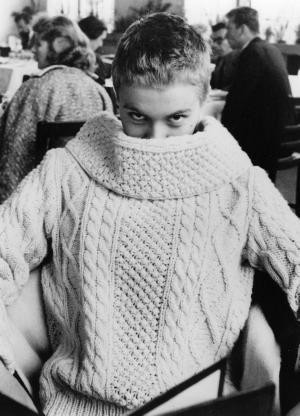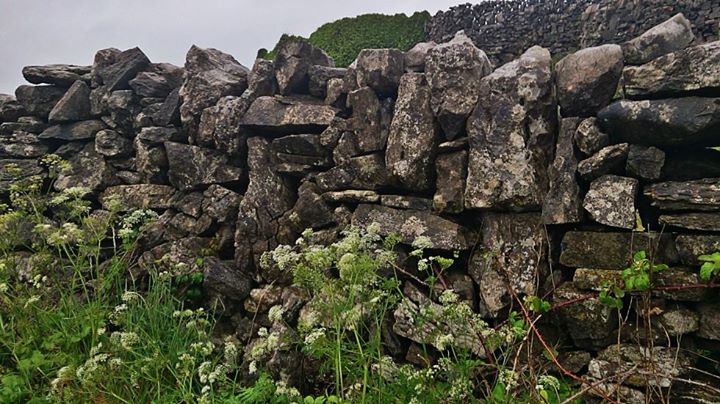
The Aran sweater is named after its place of origin, the Aran Islands off the West Coast of Ireland. One of the greatest symbols of Irish heritage, the many designs and patterns of the Aran sweater were passed down through generations of fishermen and farmers.
Each particular pattern of the Aran sweater is unique to its clan and family, and the the patterns were held as special family secrets and guarded accordingly. Since the stitches were so exclusive to each specific family, the Aran sweaters were often used to identify the bodies of fishermen who washed up on shore after being lost at sea.
The natural wool fibres of the Aran sweater made them perfect for the farming and fishing trades -- the wool, which is naturally water repellent, can absorb 30% of its weight in water before it begins to feel wet. But above all, due to wool's natural insulating properties, the Aran sweater kept its wearers warm on those cold days on the farm or at sea.
The stitches of the Aran sweater are often reminiscent of Celtic art, the knots and shapes reflective of their intricate symbols and artistry. Each of the specific stitches are tied to elements of the surrounding geography, showing a great a pride of heritage. The cable stitch represents a fisherman's ropes, the Moss Stitch represents the seaweed used as fertiliser for the crops, the Diamond Stitch represents islands, and many more represent specific wishes for health and good fortune.
Undoubtedly, the Aran sweater is full of history and Irish heritage, and with the diminishing number of hand-knits today, each hand-knit piece is exceptionally special and ties us to our past.





